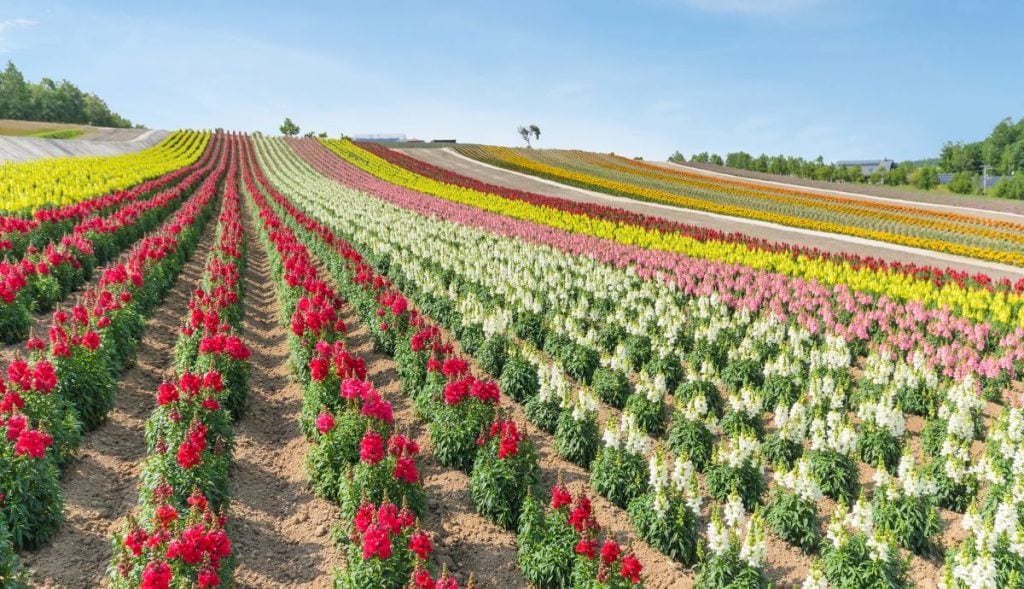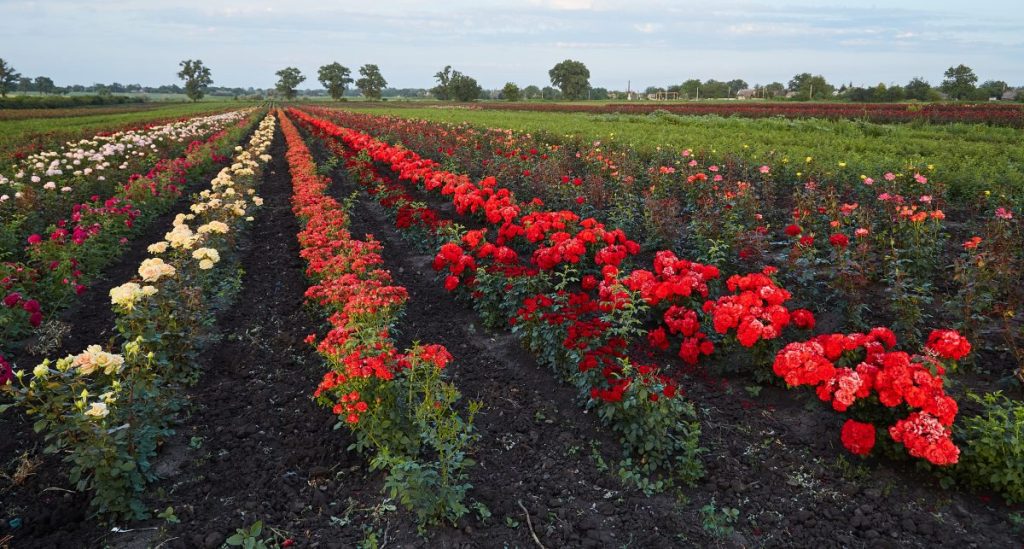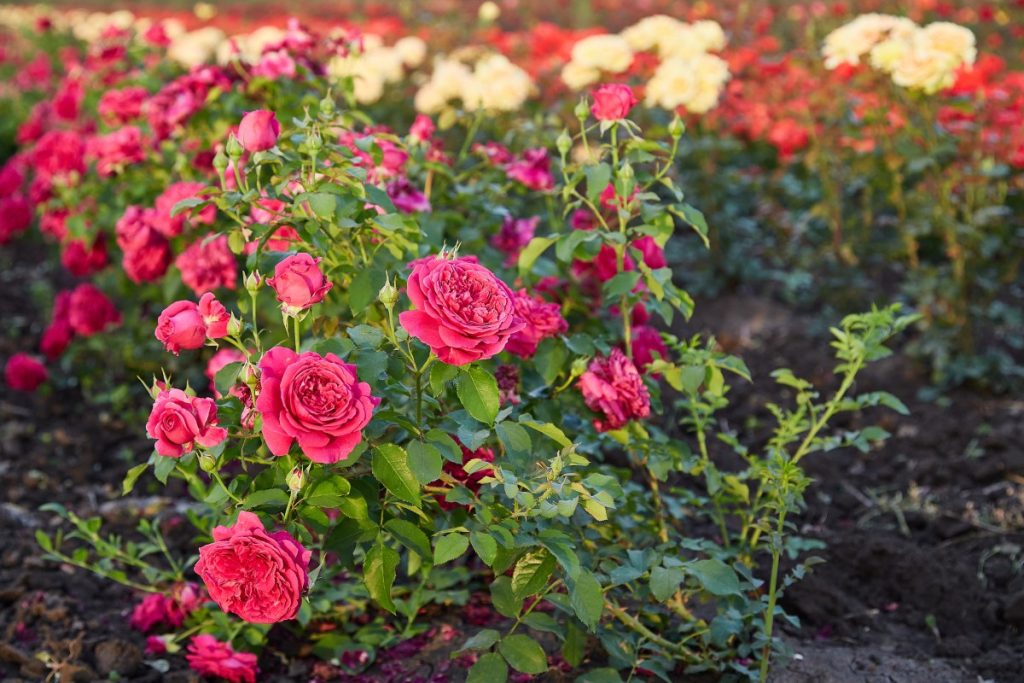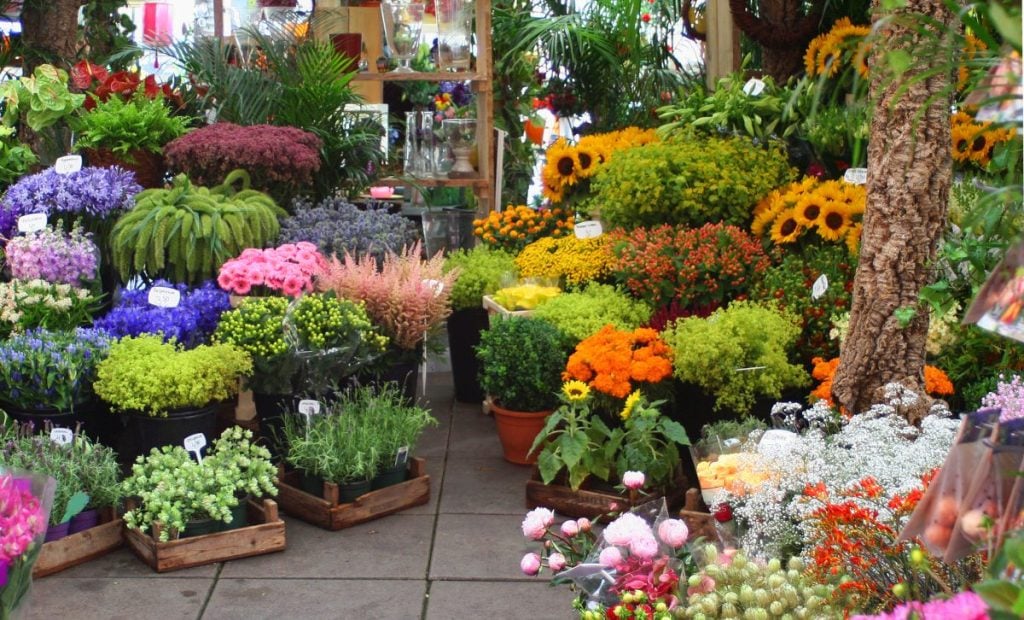If there’s one plant that’ll never lose its mass appeal, it’s the flower.
In fact, flowers are one of the highest-grossing crops. So growing some beautiful blooms can be an excellent way to supplement your income.
However, a floral farm requires a significant investment in time, materials and labor. It may be a while before you make a profit, so be sure you’re ready to do this for the long haul.
If you’re ready to grow flowers for profit, keep reading. We’re sharing everything you need to know.

Is Selling Flowers a Good Business?
Two of the most-asked questions we get are “is it profitable to grow flowers” and “how do you profit from cut flowers?”
It’s certainly possible to make good money selling flowers if you know what you’re doing.
Some farmers make up to $30,000 (£25,221) per acre growing flowers, but bear in mind this is gross income. You can expect your net profit to be about half of what you make.
Depending on where you live, you can potentially make a full-time income growing flowers on just a few acres of land.
Flower farms also tend to be relatively small. Many folks dedicate just one or two acres to growing their plants.
So while your profits may be limited, your supplies and labor costs will be too.

What Is the Most Profitable Flower to Grow?
The answer to this question will depend on many factors including where you live, where you’re selling your flowers, and who you’re selling them to.
But generally speaking, these are some of the highest grossing flowers:
Sunflowers
It’s hard to pass by a radiant sunflower without purchasing one. These bright beauties only need a couple of months to grow and typically go for about $5 (£4.23) per stem.

Snapdragon
Even the name of these blooms makes them sound exciting, and their vibrant colors don’t disappoint. To make a maximum profit, be sure to sell your snapdragons in a variety of colors.
Snapdragons can sell for around $3 (£2.54) per stem, but they’re typically sold in bunches.
Zinnias
Giant zinnias in multiple colors are almost surreal in their beauty. They’re guaranteed to catch your customers’ eye.
Zinnias usually go for about $4 (£3.38) per stem, but are more likely to be sold in bunches.
Peonies
These heavenly-smelling blooms are an interior design staple. They can also be incredibly high-grossing, costing up to $10 (£8.46) per stem,

Roses
You don’t need us to tell you that roses are one of the most popular flowers, and with over 150 varieties (not including hybrids!) you’re guaranteed to find a unique bloom to bring to your local market.
Prices for these blooms will vary greatly depending on the type you’re selling.
Pros and Cons of Growing and Selling Flowers
Growing flowers may seem like an idyllic business (and at times it can be!) But just like any other job, it has its downsides too.
Here are a few pros and cons to be aware of:
Pros
- Let’s start with the obvious. You get to grow beautiful flowers! Bright blooms bring both you and your customers joy—simple as that!
- Growing flowers helps you form connections in your community, especially if you’re the go-to supplier for local flower shops or you spend a lot of time at farmer’s markets.
- The business model of growing flowers is relatively straightforward.
- Growing flowers is an excellent workout; you won’t need to hit the gym after work.
Cons
- Depending on where you live, there can be a lot of competition for growing flowers. So you’ll need to be savvy about the type you grow and how much you charge.
- If you’re just starting out, it can be challenging to find a market to buy your flowers.
- Growing flowers can be a large time commitment, so you need to be prepared to schedule accordingly.
- Similarly, it can be hard to leave home for trips and vacations when you have flowers to tend to.

Who Should Grow Flowers for Profit?
Growing flowers won’t be the right income generator for everyone. It all depends on your motivations, abilities and time availability.
Here are a few factors that may make you the right candidate for flower growing:
You have some seed money (pun intended) to get your business started.
While growing flowers isn’t as costly as some other ventures, you’ll still need to purchase supplies like clippers, buckets and fertilizer.
If you’re selling the flowers at farmer’s markets and the like, you’ll need to purchase bouquet sleeves, rubber bands, and more. Plus there’s the cost of renting the booth and permits.
Then of course you need to purchase the flower seeds, which can become costly if you’re purchasing a rare or showy variety.
You have the time to care for your flowers.
The amount of time required to grow and sell flowers will vary wildly depending on the type of flowers you’re growing, how many you’re growing, how you’re selling them and more.
At a minimum, you’ll need to dedicate at least an hour each day to caring for your flowers, after you’ve already planted them and have the appropriate infrastructure set up.

You have the time and desire to market your flowers.
Unless you’ve secured a few florists whom you’ll be exclusively selling your flowers to, chances are you’ll need to market your flowers.
This may be as minimal as creating signage for your farmers market stand, or it may mean creating a social media presence, website and more to sell your flowers online.
The latter can become a nearly full-time job all on its own, so be mindful of the time commitment.
You’re able to do manual labor.
Growing flowers is not a passive job. You will spend a lot of time bending, picking, carrying, walking and setting up in all types of weather.
If you have injuries or a disability that prevent you from doing these things, you may find flower growing very difficult.

How to Market and Sell Your Flowers
The best way to learn how to market and sell your flowers is to pay attention to what other flower growers are doing in your area.
What’s working for them (and what’s not)? Your best bet is to take note and design your strategy accordingly.
That said, there are a few strategies that should help you sell more flowers regardless of where you live:
Choose just a few types of flowers to specialize in— at least when you’re first starting out. You’re likely to lose money if you invest in too many different types.
Select flowers that are popular in your area (for example, many folks like to pick sunflowers at a sunflower farm), or work with local forests to determine their needs.
Get creative about identifying vendor opportunities.
The local farmer’s market is an excellent place to sell your flowers, but so too may be a hip coffee shop in your area, a high-end grocery store or a pop-up holiday market.
Keep an eye on your local calendar of events and be sure to get out and about in your town (and neighboring towns) to scout out places to sell your flowers.
Take to social media.
Even if you’re not interested in using platforms like Instagram for your personal life, they can be an excellent way to market your flowers.
There are even free and low-cost online courses that teach you how to sell your products on social media. Just do a quick Google search to see what you can find.
Set up a farm stand.
If you have enough room, are close to a main road and are comfortable having customers on your property, you can set up a stand to sell flowers directly from your farm.
Not only does this eliminate the cost of commuting, farmer’s market permits and more for you, but customers get to enjoy the experience of going out to the farm and getting fresh air.
Develop a subscription program.
For customers who buy flowers from you weekly, a subscription program just makes sense.
Much like a CSA box, flower subscription programs typically feature flowers that are pre-chosen by the grower.
Customers pick up their box weekly, often at farmer’s markets. In some cases, customers come straight to the farm to pick up their boxes.
Final Thoughts
If you’re ready to invest the time and labor, flower farming can be a lucrative and joyful way to make a living.
Make sure to do some market research before you begin your flower-growing venture to see which types of flowers will do best in your area.
Whether you supply your blooms to local florists or sell the flowers yourself at farmer’s markets, there are plenty of ways to profit from growing flowers.
